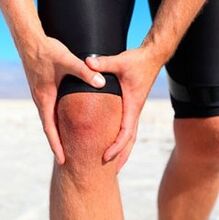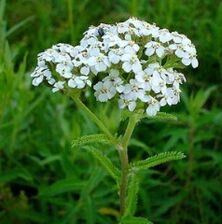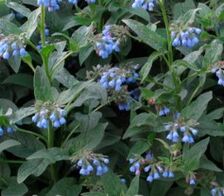Negative changes and destruction processes occurring in the cartilage tissue of the knees are called arthrosis of the knee joint. This disease is chronic and is accompanied by pain symptoms. Most often, the knee arthrosis develops with age, at a young age, a post -traumatic look is usually found. The disease is also called gonarthrosis, and its folk name is "deposition of salts".
Signs
Gonarthrosis is the destruction of cartilage tissue due to poor blood circulation in bone vessels. As a result, deforming arthrosis caused by bone growth may develop.

Typically, the first symptoms of arthrosis are almost unnoticed. Weak pain does not bring much discomfort and do not limit movements. It can go up to several years until an exacerbation occurs. Pain symptoms can intensify slightly after exercise or legs.
As the disease progresses, new symptoms appear and the old ones are enhanced. The pain appears just like that and does not pass even at rest for a long time. Long walking or lifting weights respond with prolonged pain in the knees.
After the 2nd stage of arthrosis of the knee joint, such symptoms appear:
- Synovitis - joint fluid accumulates in the joint. Its surplus can provoke the development of a dense formation on the posterior wall of the joint cavity. This phenomenon is called Baker's cyst, it can be cured without surgery.
- The deformation of the knee. At first it swells a little, with the 2nd and 3rd degree the shape of the knee may change.
- Crunch. Appears at the 2nd and 3rd stage of the disease. With a sharp crunch, pain symptoms are clearly felt.
- Limited mobility. This is characteristic of the 2nd and 3rd degree of arthrosis, when you can bend the leg only at a right angle. With a neglected form, the knees can be completely motionless, and the joints in them are very deformed.
- Mete -sensitivity. Aching pain during the change in weather conditions.
Symptoms and their intensity can vary significantly depending on the stage of development of the disease:
- In the 1st degree, the pain appears after active physical exertion. Initial arthrosis damages cartilage, but does not deform the joints. Diagnosis of the disease is difficult.
- In the second degree, the joint gap is narrowed, the damaged cartilage tissue is clearly visible in x -rays. Movements with the participation of the knees cause acute pain, when bending-extinguishing, a crunch appears. The joints work worse, their deformation is noticeable by the naked look.
- At the 3rd degree, naked areas of bone are "peering through" through the thinned cartilaginous fabric. Salt is laid in the joint cavity. The pain persists even during rest.
Types of the disease
The arthrosis of the knee is of several types. By origin:
- Primary. This type of arthrosis of the knee joint does not depend on other diseases. At risk are elderly people, women and people with excess body weight.
- Secondary. The disease appears after an injury or an infectious disease. It can be avoided if you treat the injury or inflammation of the knee joint in time.
By location:
- Bilateral. Both knees turn out to be affected. The disease has an age nature, proceeds more clearly and seriously threatens disability. Bilateral arthrosis is most often primary.
- Right -out. The disease attacks the right knee, is most often found in athletes and people who regularly experience load on the right leg.
- Left -sided. The left knee suffers, the disease is inherent in athletes and full people of the elderly.
The deforming arthrosis of the knee is a disease that is characteristic, to a greater extent, full women. It is provoked by strong deposition of salts. At the initial stage of deformation, the inner side of the joints is subjected to, in the late - external is also affected.Deforming gonarthrosis should begin to be treated as early as possible, so that the cartilage on the area above is preserved in normal condition. The main symptoms are acute pain and crunch.
Patellofemoral syndrome
Very often, the arthrosis of the knee is preceded by patellofmoral syndrome. In medical literature and practice, it is often called arthrosis of the same name. This is a lesion of cartilage fabric in the patella. Patellofemoral syndrome accompany the following symptoms:
- Pain in the joint, intensifying with prolonged flexion of the legs, jumps, running, walking the stairs or squatting.
- Limited mobility of the knee.
- Cryst and "clicks" in the joints.
- STATION in the joints.
Patellofemoral syndrome usually manifests itself in people whose activities or lifestyle are associated with large loads on their knees - athletes, fat people. Also, this type of arthrosis haunts the elderly. Quite often, patellofemoral arthrosis becomes a consequence of a severe knee injury.
When diagnosing the syndrome, it is important to immediately ensure the rest of the sore leg. Sometimes, in order to remove the load from the knee, the doctor can recommend an orthosis or a tight bandage. Full people will need to lose excess weight a little. At home to relieve pain, you can make cooling compresses.
Patellofemoral syndrome develops progressively:
- In the 1st degree, the pain appears only after very strong loads, fatigue in the knee is often felt.
- In the 2nd-pain and discomfort are fixed more often, the joints are constrained. Symptoms take place after rest.
- In the 3rd-constant pain, significant limitation of movements.
It is necessary to treat patallofmoral syndrome comprehensively, and not just relieve pain. Treatment should include the reception of medications, the introduction of chondroprotectors, physiotherapy. Diet and physiotherapy exercises will not be superfluous.
Post -traumatic arthrosis
Post -traumatic arthrosis is a type of disease that is most often found at a young age. After the knee injury, the limb is fixed, and blood circulation in it worsens. This negatively affects the cartilage tissue and provokes the development of arthrosis. Sometimes post -traumatic arthrosis can develop after a surgical operation on the joints. Scars on the tissues can disrupt blood supply in the knee.
The post -traumatic type of this disease is chronic, so the treatment is aimed at ensuring that arthrosis does not progress further. It is almost impossible to cure post -traumatic arthrosis on your own at home. It will be necessary to receive analgesics, chondroprotectors and antispasmodics, physiotherapy exercises, massage and hardware procedures. In advanced cases, surgical intervention may be required.
Hemarthrosis
Hemartrosis is a separate type of knee arthrosis that appears as a result of injury or due to problems with blood coagulation. Hemartrosis can be caused by such factors:
- bruises or fractures of the knee joint and patella;
- traumatic damage to meniscus and cartilage;
- rupture of ligaments or synovial membrane;
- fracture of the femur or large berets;
- hemophilia;
- tumors of various origin;
- some neurological and infectious diseases;
- prolonged intake of anticoagulants;
- osteoarthritis;
- surgical intervention;
- Problems with blood vessels.
- The knee is swollen or greatly changed its shape;
- When pressed under the fingers, flooding is felt;
- The temperature rises in the injured place;
- Stone and blue soft fabrics.
It is possible to accurately diagnose hemarthrosis after a joint puncture. In addition to the analysis of articular fluid, CT and MRI can be made.
To prevent complications, hemarthrosis needs to be treated at once. With minor injuries, you can start treatment at home. Simple first aid methods will help minimize the consequences of hemorrhage in the joint:
- provide a damaged knee with peace;
- Raise your leg and fix it;
- make a cold compress;
- Take anesthetic.
This sequence of actions even at home will relieve pain symptoms and help treat hemartrosis to a mild degree, in more difficult cases, you need to seek medical help.
Folk remedies
Treatment of gonarthrosis with folk remedies should be agreed with the doctor. It is recommended to combine folk remedies with the methods of official medicine. At home with the help of folk remedies, hemarthrosis can be effectively treated to a mild degree or alleviate the patient's condition with complications. It is recommended to make a compress with horseradish:
- Peel and grate a small piece of horseradish.
- With strongly sensitive skin, the rhizome is replaced by plant leaves.
- Hold the mass in a water bath for a couple of minutes.
- Put the root on gauze and make a compress.
- The duration of the procedure is two hours.
At home, with traumatic hemarthrosis, ointments cannot be used in the first two days after the injury.
With severe injury and abundant or prolonged bleeding in the joint, you must definitely contact the traumatologist. Folk methods of treatment in this situation are of secondary importance. Hemartrosis must be treated with blood -based diet in the hospital, but at home you can use drugs with anti -inflammatory and hemostatic effect. The infusion on the basis of such herbs will be useful:

- yarrow;
- oregano;
- nettle.
Make it like this:
- Grind plant raw materials.
- Mix herbs in equal parts.
- Three tablespoons of the collection pour 600 ml of boiling water.
- Insist within 1 - 1. 5 hours.
Warm filtered infusion should be taken three times a day for 50 ml.
Gelatin
At home, you can try to treat deforming arthrosis with gelatin. In large quantities, it contains collagen, which improves the condition of cartilage tissue and increases the production of intersourgine lubrication. D geicetine treatment should be combined with the intake of the vitamin complex rich in iron and vitamin C.
The healing mixture with gelatin is prepared according to this recipe:
- Pour a teaspoon of gelatin 50 ml of cold water.
- Leave the mixture for 12 hours.
- Add 150 ml of boiling water.
- After stirring, add a teaspoon of honey.
A glass of this drink with gelatin drink on an empty stomach for 10 days. Then you need a week break. The course is repeated twice.
Ointments and rubbish
To prepare a house of effective ointment, the following components will be needed:
- turpentine - 150 ml;
- vodka - 150 ml;
- olive oil - 150 ml;
- Camphor - 3 grams.

All the components of the ointment need to be mixed and apply a remedy twice a day to a sore spot.
At home, deforming arthrosis can be treated using a radish -based ointment. The following ingredients will be required:
- black radish;
- linden honey - 150 grams;
- vodka - 100 ml;
- Sea salt - 15 grams.
Masi recipe:
- Clean and cut radish.
- Skip the root crop through a meat grinder or grind in a blender.
- Squeeze the juice from the radish.
- Add other components and mix the mass.
This mixture is rubbed with a sore knee.
As an ointment, you can use a fatty pork fat. Every evening you need to rub this product into the joints and insulate them overnight. In this way, arthrosis needs to be treated for at least six months.
When you need to quickly relieve pain and restore mobility to the leg, warming ointments will come in handy. It is important to understand that these drugs are not able to cure the disease, but only temporarily relieve symptoms. Contraindication to the use of warming drugs is post -traumatic arthrosis and damaged skin.
A warming medicine with an anti -inflammatory effect can be made at home. Therapeutic ointment is prepared from these components:
- tissue leaves - 1 cup;
- tissue roots - 2 cups;
- olive oil - 0. 5 cups;
- honey - 0. 5 cups.
Method of preparation and application:
- Grind and mix vegetable materials.
- Melt, if necessary, honey.
- Mix all the components, it is better to do it with a mixer.
- Before use, the desired portion of the product must be heated.
- The ointment can be stored for 2 weeks in the refrigerator or 3 months in the freezer.
- Apply the drug to the joint, insulate and leave for 8 - 12 hours.

Hyaluronic acid
Primary arthrosis is very effectively treated with hyaluronic acid. This substance is the basis of synovial fluid.Intra -articular injections with hyaluronic acid can cure or stop the development of any type of knee arthrosis. It is forbidden to carry out this procedure at home! Injections with hyaluronic acid should only be done by an experienced doctor in special conditions.
For his part, the patient can eat foods rich in hyaluronic acid to enhance the therapeutic effect. For the health of the joints, it is recommended to introduce the following dishes into your diet:
- chicken broth or jelly prepared using crests, paws, tendons and skin;
- soybeans;
- Tofu;
- soy milk;
- red grape skin;
- red wine;
- starchy root crops and vegetables.
To activate the production of hyaluronic acid with his own organism, it must receive sufficiently calcium, routine and vitamin C.
























